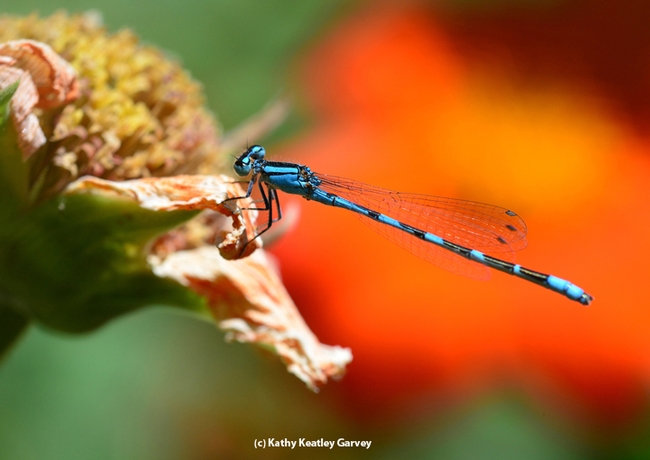They look like shiny blue and black needles.
Make that "flying" shiny blue and black needles.
We spotted this damselfly foraging on a Mexican sunflower (Tithonia) this week in our family bee garden. The blue was breathtaking.
Can anything be so blue? What species is this?
"By the amount of black on the middle abdominal segments, it looks to me like a male of Enallagma carunculatum Morse," said senior insect biosystematist Rosser W. Garrison, with the California Department of Food and Agricultur'es Plant Pest Diagnostics Branch.
Its common name is "tule bluet." It's a species of damselfly in the family Coenagrionidae, found throughout North America, according to Wikipedia. It's all over the United States, "except for the southeastern quarter."
Its blue and black abdomen is usually more black than blue. It derives its common name, "tule bluet," from the stands of tule it frequents. Its habitat includes rivers, lakes, ponds, marshes and bogs. It likes to hang out in the bulrushes.
The nymphs eat such aquatic insects as mosquito and mayfly larvae, while the adults feet on a wide variety of small flying insects, including mayflies, flies, small moths and mosquitoes. Sometimes they'll grab a few aphids from plants.
Our little buddy (along with other damselflies) was hanging out in our Tithonia patch.
But the Tithonia patch is just a few feet away from our fish pond...
Check out the images of tule bluet on BugGuide.net for more of a blue fix and more information!
Attached Images:
